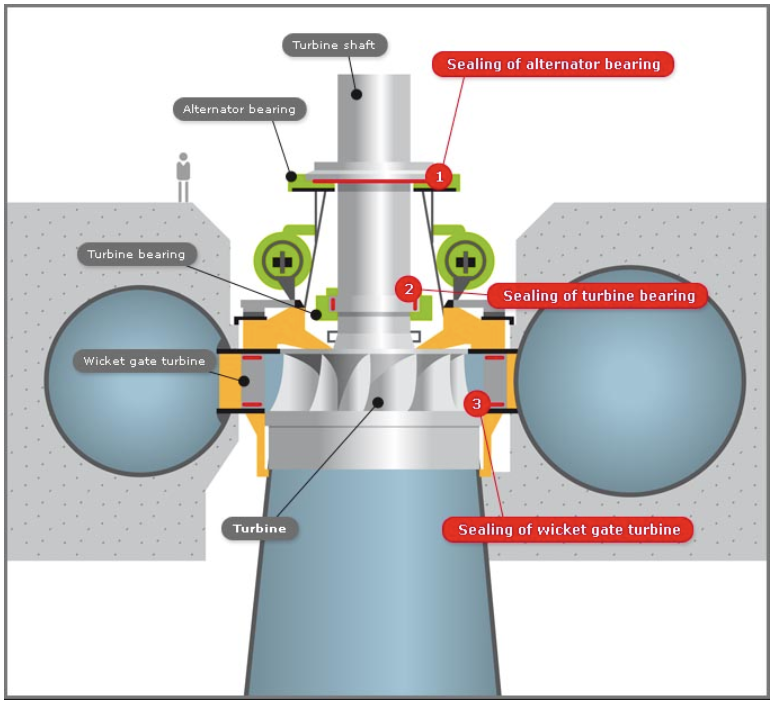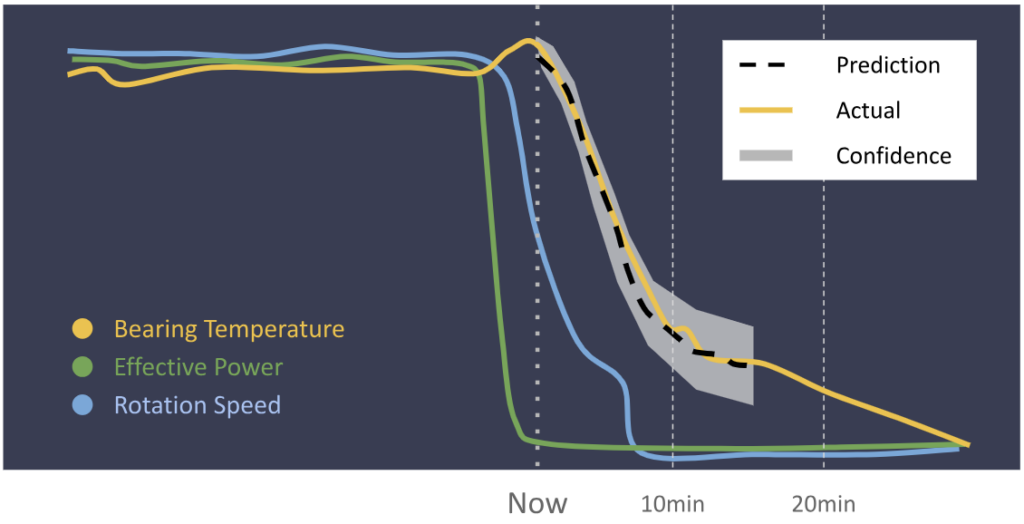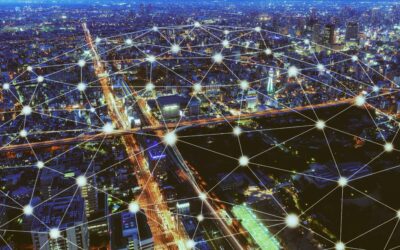Monitoring certain key sensor measurements is crucial in many industrial applications for a number of reasons, such as quality and stability control, safety considerations and so on. Another reason could be identification of need for maintenance of critical parts of the system. Depending on the implementation, such applications are usually referred to as either reactive or predictive maintenance.
In this customer project, we focused on monitoring and forecasting a temperature measurement of a bearing inside a turbine of a hydroelectric power plant (see Figure 1). The power generator under consideration is used as reserve power, so a typical production period varies from a few hours to several days. This means that the mill is being started and shut down very often. During power generation when the turbine is rotating, the bearing heats up and is being cooled down with water to keep the temperature on a roughly constant level. When the power generation is stopped and the turbine ends rotating, the bearing is expected to cool down. If the bearing doesn’t cool down following an expected pattern, this is a likely indication of a maintenance need (such as a need for lubrication). Therefore it is crucial to monitor the cooling patterns of the bearing. In the project, we developed a machine learning model to predict the temperature measurement of the bearing during the shutdown events.

Deep learning neural networks have become the de facto modelling choice for various domains such as computer vision, and natural language and audio processing. They are also very powerful for time series forecasting, and we have used them with great success modelling time series sensor data in many previous projects and solution implementations. They provide a convenient framework for modelling nonlinear relationships between different sensor measurements, such as the pattern between the rotation speed of the turbine and the temperature of the bearing. It is also easy to incorporate other additional sensor data into the model, such as the temperature of the cooling water and so on. To train the model, we used historical data collected from our customer’s hydroelectric power plant.
The model was trained to forecast the bearing temperature measurement 15 minutes into the future. Figure 2 shows an example prediction made at the beginning of a shutdown event, and also shows the true realised temperature measurements after the prediction was made. The example demonstrates that the true temperature follows the prediction very closely, indicating a desired and expected cooling pattern. A substantial deviation would suggest need for maintenance or at least a closer inspection.

Getting value with advanced sensor analytics, forecasting and simulation
The presented case is a rather straightforward time series forecasting example, but there are a variety of useful things one can do with modern machine learning models for such data. For example, in other projects and solution deployments we have built models that can be used to predict various quality measurements in industrial processes as a function of control parameters exerted into the process. With such a model, the user will be able to anticipate and simulate the effect of each control parameter to the output quality before actually taking the action in the system. The model can even be used to recommend an optimal control so as to achieve the desired output quality.
If you’re interested in hearing more about our expertise in this domain, please don’t hesitate to contact us!
–
Authors:
Juho Piironen, PhD, Lead Data Scientist
Shun Hirai, CEO




